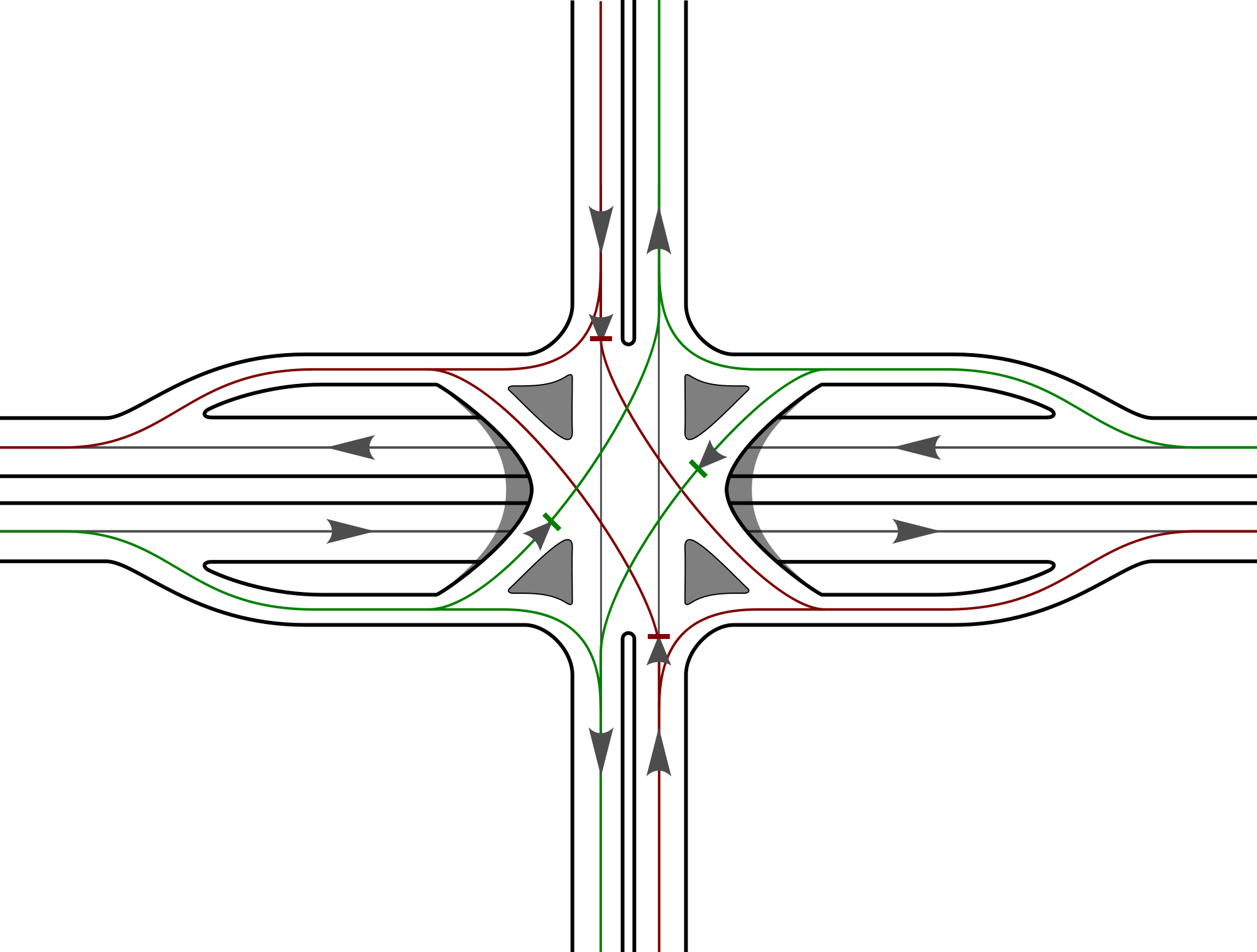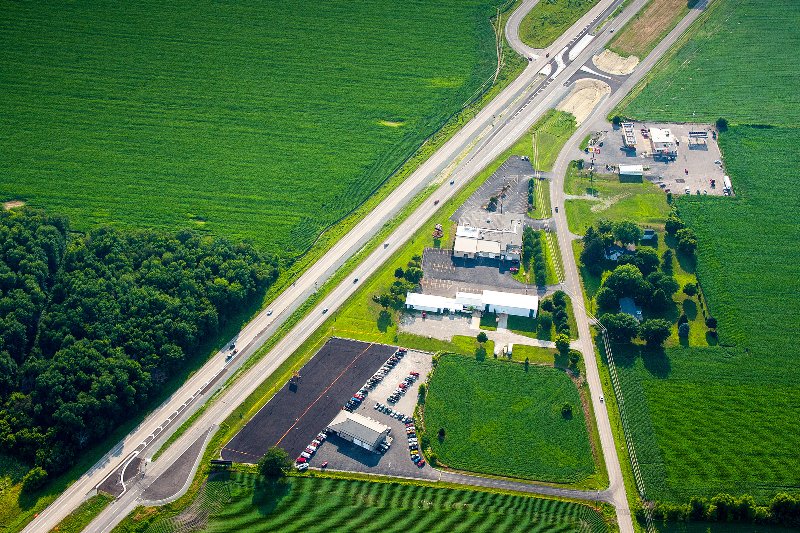All modern roundabouts have median islands separating incoming and outgoing auto traffic. Pedestrians don't have to find a gap in two directions of traffic, just one. This is safer for pedestrians, especially for younger or older ones, because they only have to concentrate on one direction of traffic at a time. This is what is meant by two-phase. Cross the first half, pause if you need to, then cross the second half. On multi-lane crossings pedestrian beacons or signals are often added if the auto (or pedestrian) traffic is too numerous. The signals can also be two phase, requiring the pedestrian to push a second button when they get to the median. The median can also have a Z path to reorient the pedestrian to view oncoming traffic. Also, the signals usually rest in off, so they are only activated if a pedestrian needs the help crossing. This way only motorists that need to stop are delayed.
Modern roundabouts are the safest form of intersection in the world.
The safety comes from the ‘slow and go’ operation instead of the ‘stop or go fast’ way a stop light works. The smaller size of properly designed modern roundabouts is what makes them safer and keeps speeds in the 20 mph (30 kph) range. This makes it much easier to avoid a crash or stop for pedestrians. It also means that if a crash happens the likelihood of injury is very low.
Safety is the #1 reason there are over 3,200 modern roundabouts in the US today and many more on the way.



